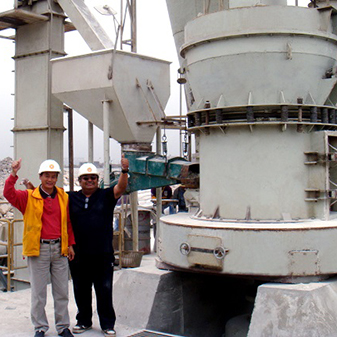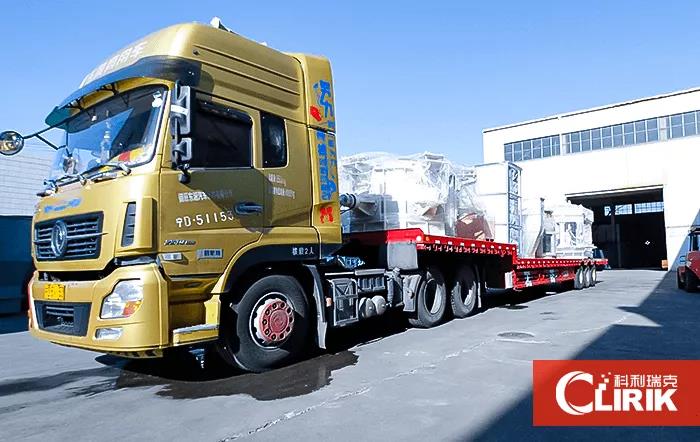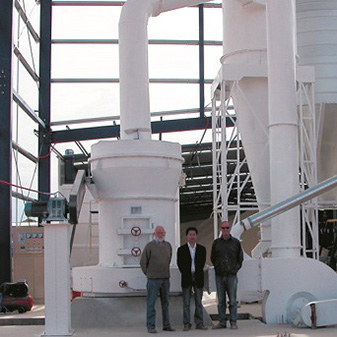Vertical wet stirring mill equipment is mainly divided into mixing mill (tower mill) and sand mill. The barrel of the stirring mill is thicker and the spindle angular velocity is lower. The grinding medium can be either a sphere or cylinder with a diameter of 4-12mm, or a microbead with a diameter of 0.2-3.0mm. The angular speed of the main shaft of the sand mill is relatively high, and the grinding medium is mostly microbeads with a diameter of 0.2~3.0mm.
Vertical wet stirring mills have been widely used in gold, silver, molybdenum, lead-zinc ore, manganese ore, iron ore and nickel ore, etc., to achieve fine grinding or regrind operations with good results.
A. Main features of vertical wet stirring mill (tower mill)
1. The tower mill has strong fine grinding ability and can grind materials to 1μm or finer;
2. The vertical ball mill is energy-saving, which is more than 50% energy-saving compared with the horizontal ball mill;
3. The efficiency is more than 10 times that of the horizontal ball mill;
4. The granularity of the product can be adjusted, and it can be produced intermittently, cyclically, and continuously;
5. Low noise, low vibration, and noise less than 85 decibels;
6. The structure is simple, the operation and maintenance are convenient, the floor space is small, and the basic cost is less than 1% of the equipment cost.

B. Application range of vertical wet stirring mill
1. Utilize the vertical spiral stirring mill to immerse while grinding, which can extract gold economically, with low investment, low cost and high gold recovery rate;
2. It is suitable for secondary grinding, fine grinding of sulfide ore and utilization of tailings. It can economically grind ore to -400 mesh and greater than 90%-95%;
3. The vertical ball mill can grind fine grains and grind the ore to below -10μm.

C. The mechanism of ultrafine pulverization
The mechanism of ultra-fine pulverization is: because the grinding medium is under the action of high-speed stirring by the stirring blade, the number of collisions with each other increases rapidly, and the probability of crushing and shearing between the small balls increases, thereby improving the pulverization efficiency.
In most cases, only the stirring paddle rotates, and there are also stirring paddles that rotate oppositely to the container. During stirring, the grinding medium does not move as a whole, but moves irregularly. This irregular movement has three main effects on the material to be ground: the grinding medium is thrown away by the stirring paddle to produce an impact force between each other; the grinding medium itself generates shear and friction when it rotates; the grinding medium is filled with the stirring paddle The space left creates impact force.
D. Application of vertical spiral mixing mill
1. The tower mill is used for ultra-fine grinding of refractory gold ore: gold is wrapped in pyrite, and the gold-bearing ore in the form of microscopic gold, submicroscopic gold or solid solution is difficult to dissolve and extract gold. A type of gold ore. During the leaching process of the vertical spiral stirring mill, the strong stripping action between the grinding medium and the mineral material destroys the diffusion interface layer on the surface of the material particles, thereby accelerating the chemical reaction speed and improving the leaching rate.
2. The tower mill is used for the regrind of molybdenum ore, lead-zinc ore, copper ore and iron ore: In metal mines, gold and silver ore, molybdenum ore, copper ore, nickel ore, lead-zinc ore need to be ground to -400 The monomer dissociates only when the mesh is greater than 95% or higher, and an ultrafine ball mill with fine grinding and scrubbing functions is required.
3. Vertical ball mills are often used in the ultra-fine grinding of electrolytic manganese.
4. Ultra-fine grinding of rare earth ore.
5. The ultra-fine grinding of kaolin ore and heavy calcium ore also uses vertical spiral mixing mills.



